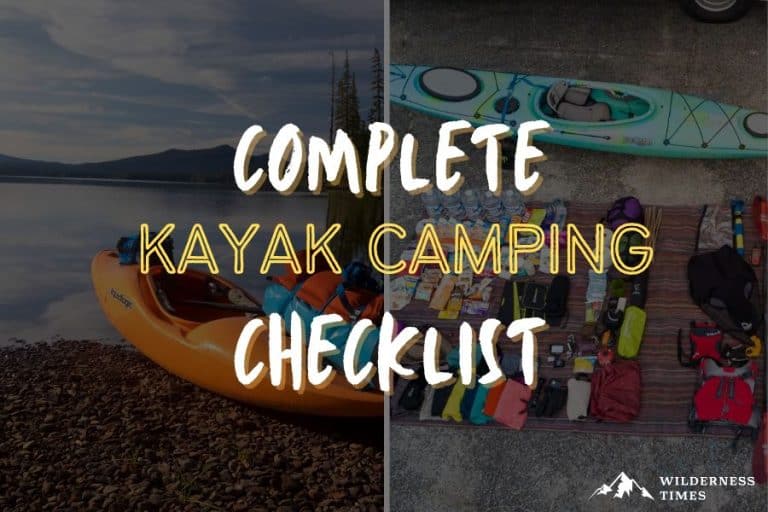Kayak camping can be a great way to get out on the water and explore areas you can’t reach on land!
However, kayak camping is definitely a different type of camping – and one that not everyone knows how to do.
If you’re interested in kayak camping, this article is for you!
We’ll go over a comprehensive gear list and offer a few tips and tricks to help you get started.
Downloadable & Printable Checklist
Kayak Gear Checklist:
Essential Kayak Camping Gear
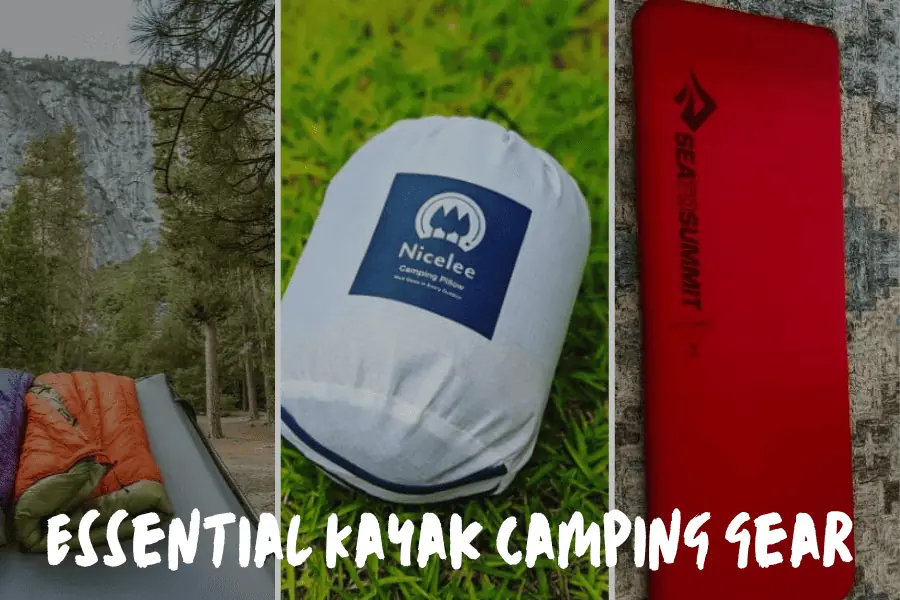
- Kayak
- Emergency kayak paddle
- Bilge pump
- Dry pack/bags
- Sleeping pad
- Backpacking pillow
- Waterproof headlamp
- Lightweight camp chair
- Spray skirt
- Sleeping bag
- Multi-purpose tent
- Repair kit
Camping Safety Gear
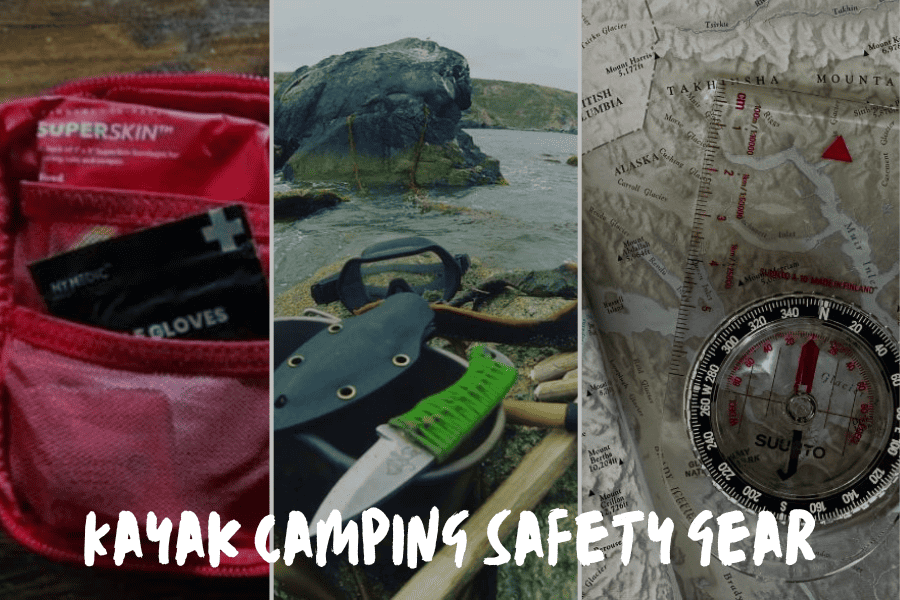
- Personal flotation device (PFD)
- Paddling knife
- GPS, maps, compass
- Whistle
- Bear spray
- First aid kit
- Two-way radios
- Emergency beacons
- Cable lock & anti-theft mesh
Clothing
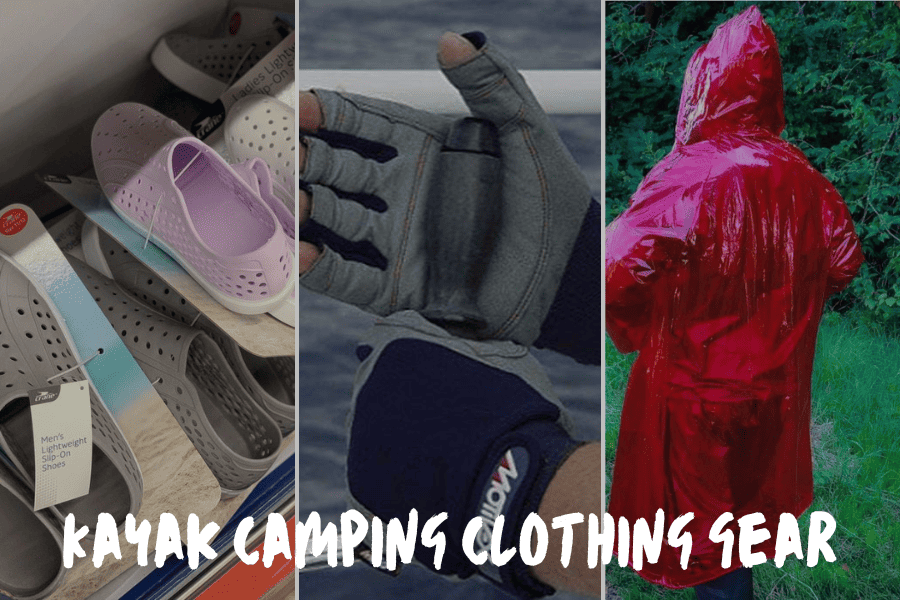
- Waterproof duffel or dry bags
- Swimwear
- Raincoat
- Underwear
- Rash guard
- Water shoes or sandals
- Dry suit or wet suit
- Kayak gloves
- Synthetic or wool socks
- Weather-appropriate clothing
Cooking Gear
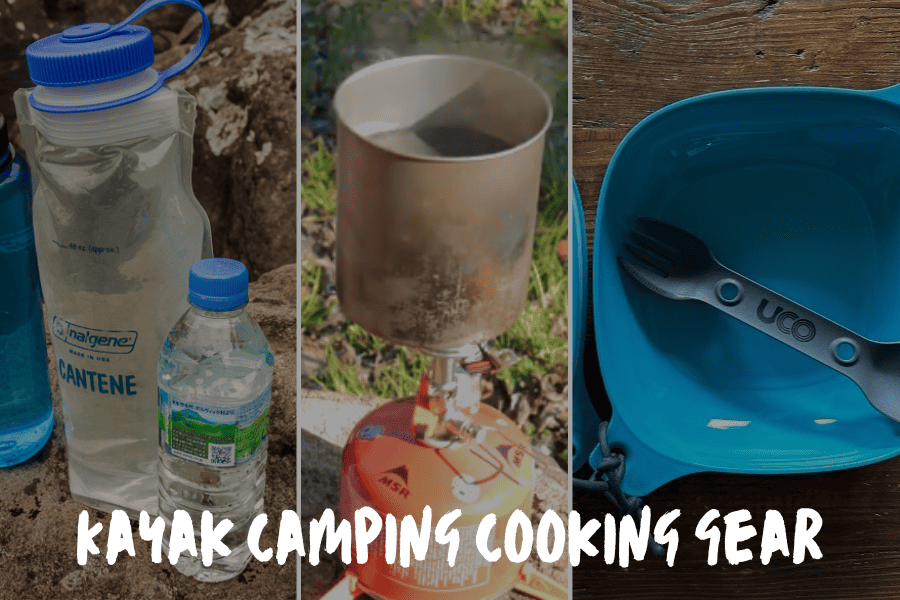
- Food
- Stove & fuel
- Mug, bowl, & utensils
- Water bottle
- Trash bags
- Water filter
- Can opener
- Collapsible sink
- Dish kit
- Waterproof lighter/matches/fire starter
- Bear-proof food storage
Personal Kayak Camping Gear
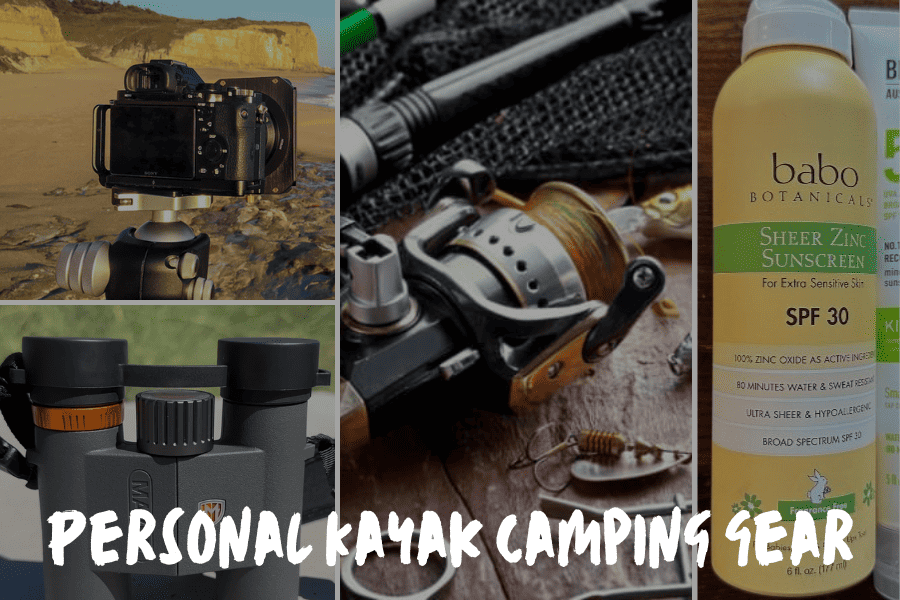
- Sunscreen & lip balm
- Bug spray
- Toiletries/Hygiene kit
- Cell phone & power bank
- Sunglasses & hat
- Float trip plan
- Fishing gear
- Camera & binoculars
- Personal ID
- A small amount of cash
Downloadable & Printable Checklist
How To Choose A Kayak Camping Location
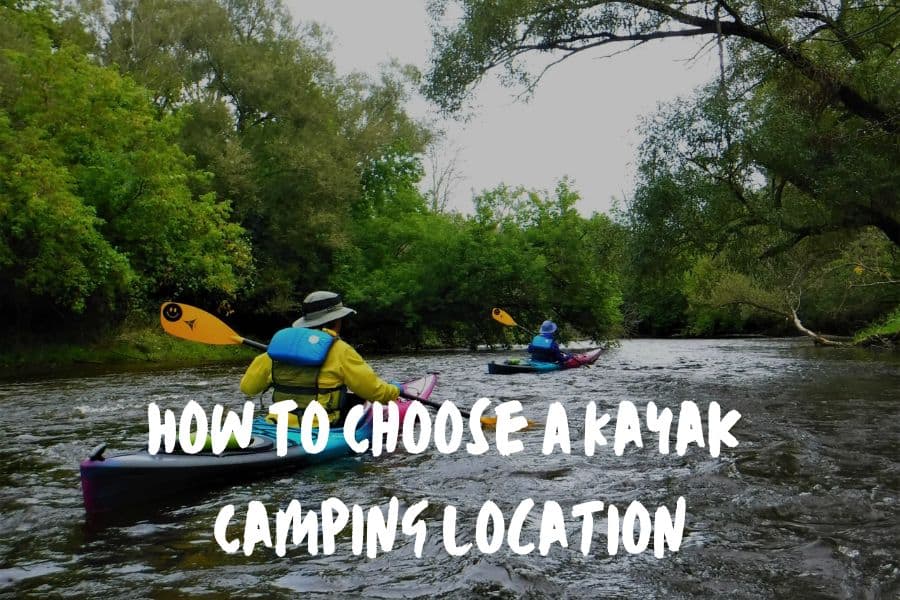
There are a few ways to pick the best kayak camping location while you’re out on the water.
First, some waterways will have designated camping spots on the side of the water.
If this is the case for your trip, you can and should use these spots for setting up camp.
Other waterways will not have designated camping spots.
In these situations, look for a flat, sheltered spot at least 200 feet away from the water line.
Some bodies of water will experience rising tides, so it’s important to keep your camp and gear away from the water’s edge.
How To Choose A Kayak
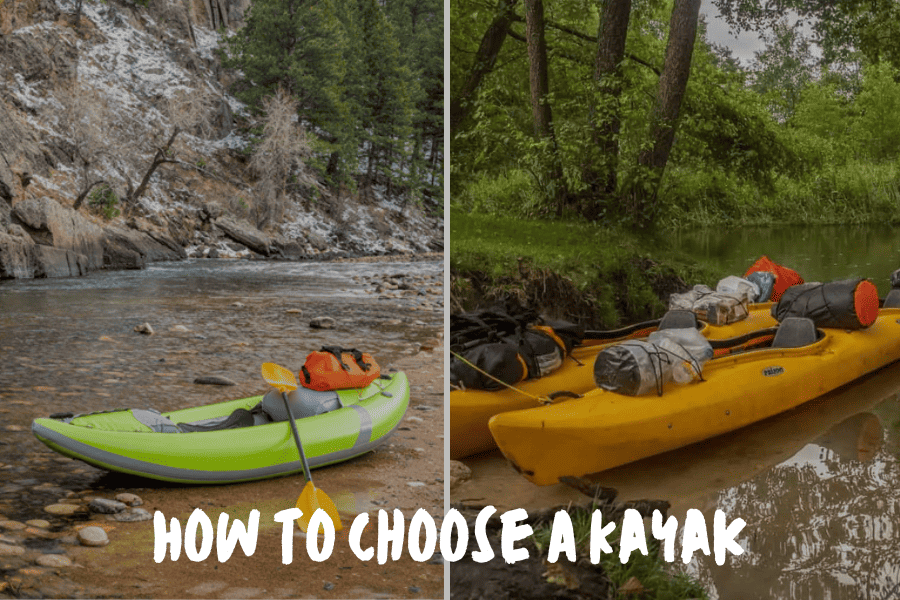
The main things to keep in mind when it comes to choosing a kayak for your outdoors adventure are storage, mobility, and materials.
First, you’ll want to make sure that the kayak you’re using has storage compartments large enough for all of your gear.
Even with all the gear loaded, you still want a kayak that will move across the water with a good level of mobility.
Looking for a mobility-enhancing design will help increase your ability to navigate the waters.
Check out our article on the different types of kayaks to see which will be best for you!
How To Pack Your Kayak
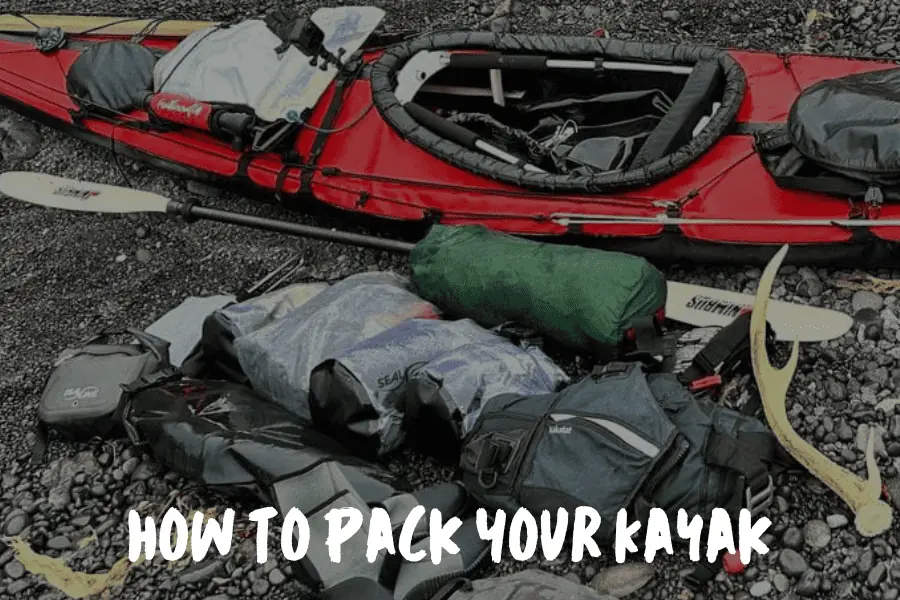
There are two categories of gear when it comes to kayaking: gear that can get wet, and gear that needs to stay dry.
Gear that can get wet, like sealed food containers and tent poles, can be packed first at the bottom of your boat.
No packing compartment is totally waterproof. But they are designed so you don’t worry about these items getting damaged from stray water.
Additionally, you can always pack perishables at the bottom of the boat wrapped in a food safe bag.
Packing compartments are likely submerged in water throughout your trip.
So, they will be cooler in temperature and more likely to keep your food fresh.
Once you’ve packed the gear that can get wet and the perishables, you’ll want to pack all your gear that needs to stay dry.
Clothing and sleeping bags should go in the top section of the packing compartments.
When packing this gear, I recommend using dry bags (or, in a pinch, layered trash bags) to keep your gear extra dry.
Finally, even weight distribution is fundamental to packing your kayak – and it can take some practice.
I recommend packing everything in your boat on a flat, solid surface before you even hit the water.
This way you can make sure all your gear is distributed evenly, and re-pack if needed before you’re out on water, which will make re-packing more difficult
A Few Simple Things That Will Make Your Kayaking Trip Easier
Dry Bags
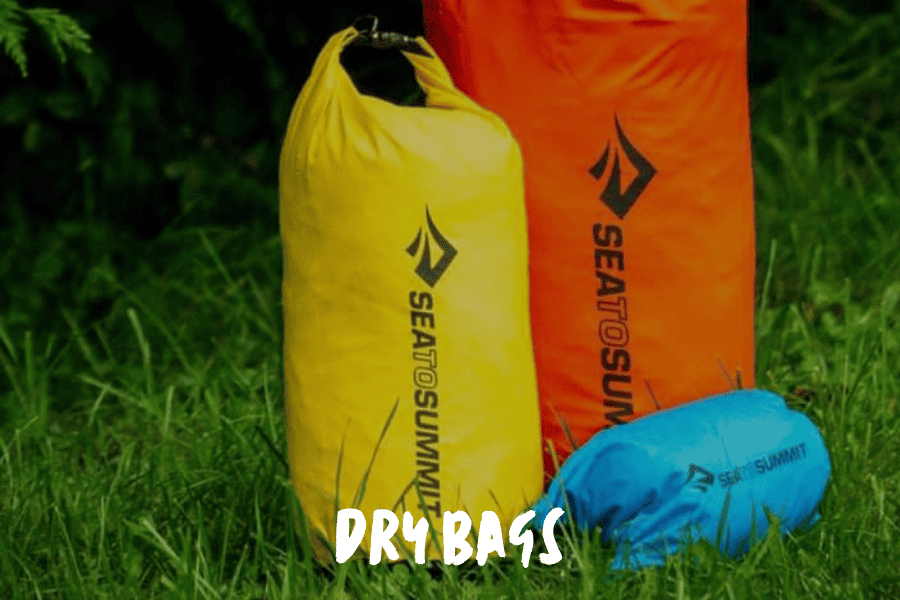
Dry bags are large bags that are covered in water resistant coatings and closed through water tight methods.
They are a great way to keep your gear dry, even if it goes overboard.
When I’m out on the water, I generally bring a few larger dry bags for packing my gear and a smaller dry bag for personal electronics I can keep at an arm’s reach.
Sunglasses Strap
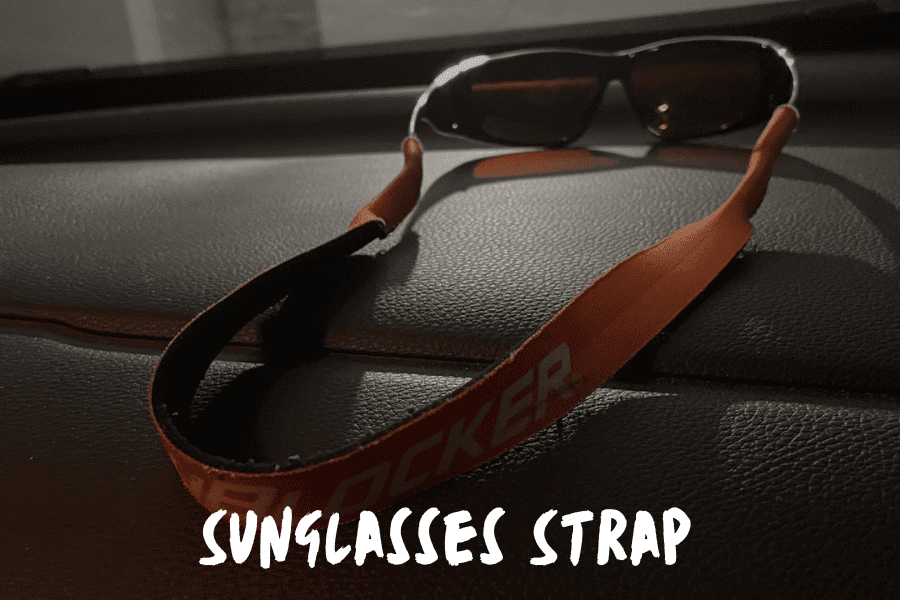
Sun glare off of water can be an issue on any kayaking trip, making sunglasses – and sunglasses straps– essential pieces of gear.
These connect to either side of your sunglasses and loop around your neck, making it much harder for them to slip off and disappear into the water.
Kayak Repair Kit
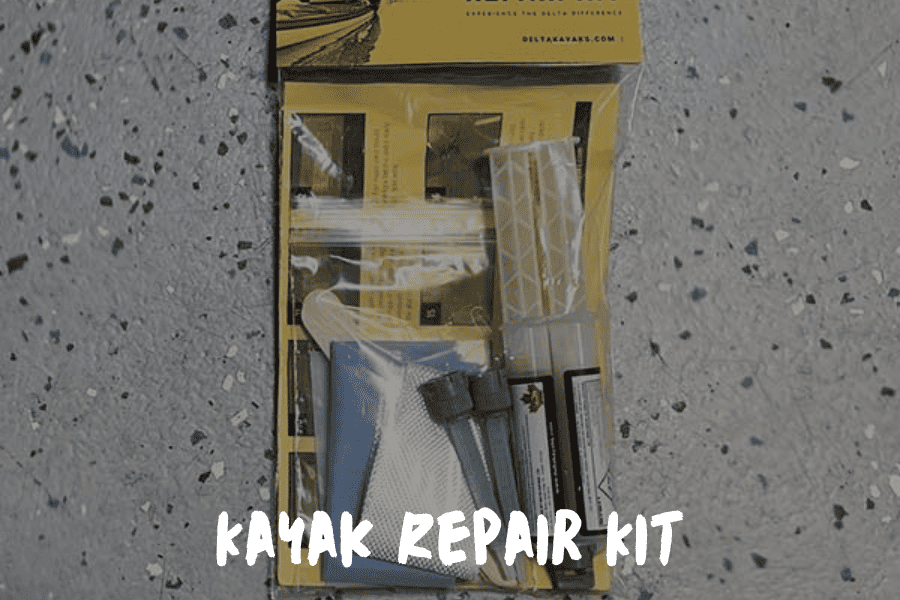
Kayaks – just like any other piece of gear – can get damaged while you’re out adventuring.
Bringing a kayak repair kit, which includes repair patches and glue, will ensure that you can stay afloat and continue on your trip.
Water Shoes
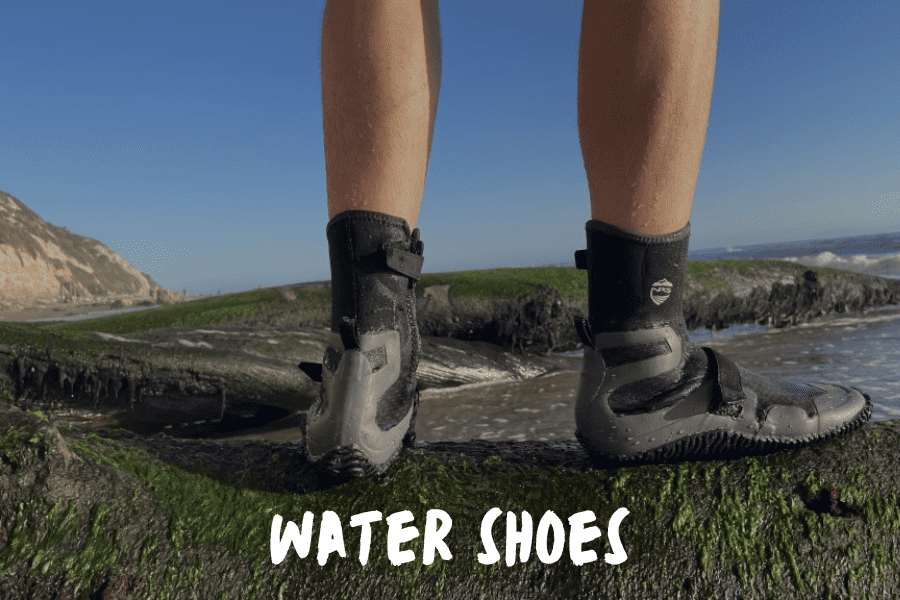
Good water shoes are essential when you’re out on the water because they protect your feet from sharp stones and other potential harms.
When you’re looking for a pair of water shoes, look for a design that will stay secure on your foot and protect your toes.
Keens are a great example of this, since they have a closed toe design that stays firmly on your feet.
Comfy Kayak Seat
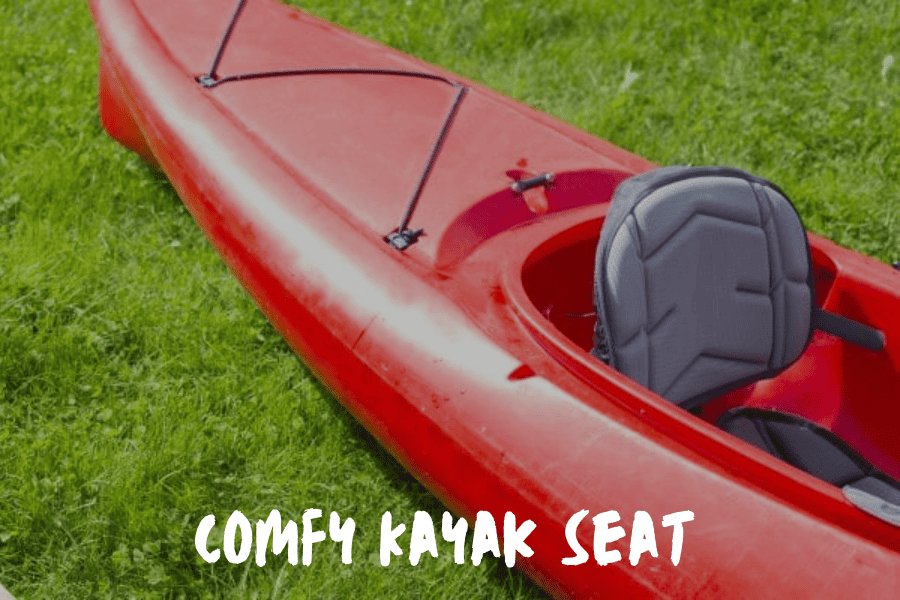
After sitting in the same seat all day, kayaking seats can absolutely get uncomfortable.
There are multiple brands that make kayak seat cushions that can strap onto the boat seat and add some comfort to your kayaking experience.
Tips For Your First Kayak Camping Trip
Kayak camping is different from every other type of camping out there, so here are a few tips and tricks to help you get started.
Start Short
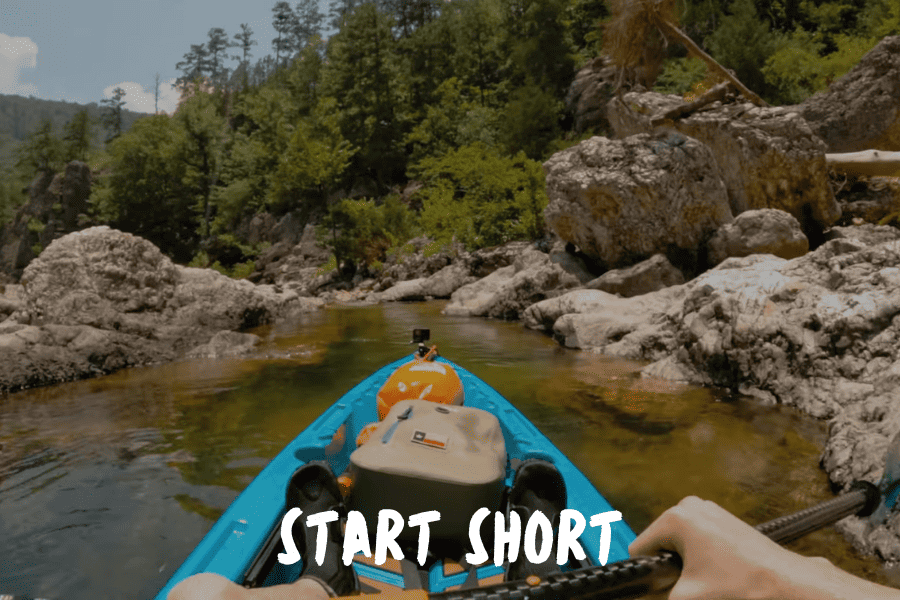
If you’ve never been kayak camping before, you might be surprised by how much kayaking (especially with added gear) can take out of you.
This is why it’s important to start with shorter trips, and build yourself up to longer, multi-day trips.
Jumping straight to a longer trip can leave you injured, too tired to go on hikes at the end of the day, or too low on food and gear.
So remember, when in doubt, start short!
Share Your Itinerary
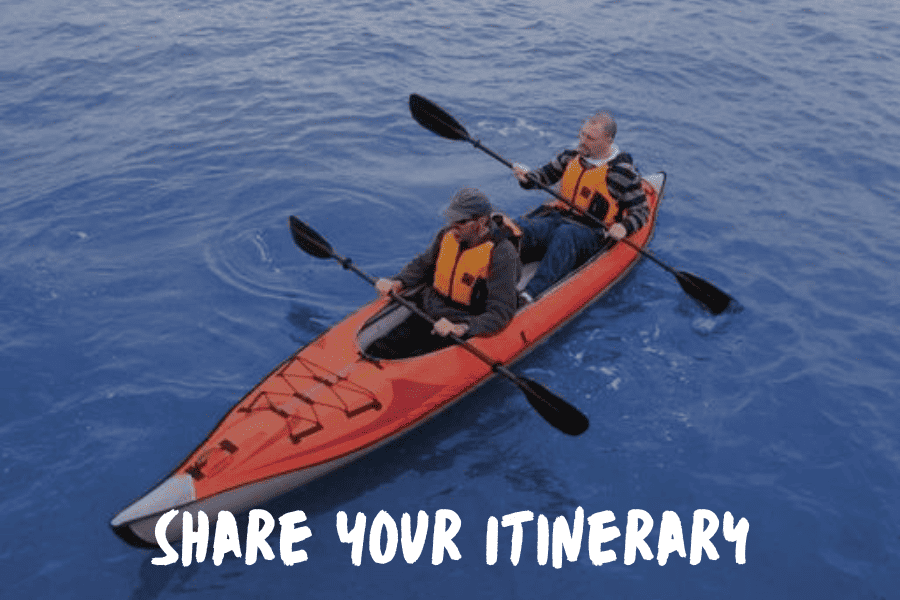
Rivers and lakes can be unpredictable, so it’s always important to share your itinerary with someone on shore.
When sharing your itinerary, be sure to share when you’re planning on being at each camp, as well as when you plan on ending your trip.
Your “land partner” can keep track of your progress – and notice if you aren’t where you’re supposed to be.
Avoid Overpacking/Underpacking

Because you’re packing all your gear in your boat with you, it’s especially important that you bring the right amount of gear (and weight).
Most kayakers tend to lean towards minimal packing. They only bring ultralight tarps for sleeping shelters and the clothing they must have.
However, it’s important that you bring enough gear without overpacking – especially if you’re a first-timer.
Always remember the essentials (which we’ve listed above) and go from there.
I recommend laying out everything you’re planning to bring with you before you pack it. If you see any duplicate items, feel free to set them to the side.
Also be sure to discuss gear with your adventure partner(s) to ensure you’re bringing only what you need.
Know Local Rules & Regulations

Waterways are generally protected by park or governmental regulations.
Because of this, it’s important to check (and double check) any rules or regulations associated with the area before you head out.
For example, some areas will limit where you can camp at night while others will follow Leave No Trace principles.
Violating these rules can result in tickets and fines, so it’s important to know what rules you need to follow before you get there.
Additionally, there are also rules and regulations that are set in place to keep kayakers safe from dangerous areas.
It’s important to check these out so that you can protect yourself from unpredictable rapids or sudden waterfalls.
Be Aware Of The Weather

Weather can make or break your kayaking adventure.
I recommend checking the weather while you’re planning your trip, and then continuing to check the weather leading up to your adventure day.
If you’re seeing storms, high winds, or other bad weather conditions on the radar, it may be a sign to reschedule your trip.
FAQs
Is Kayak Camping Safe For Beginners?
Yes! Kayak camping can be safe for beginners.
However, if you’re new to kayak camping, I recommend that you go out on the water with an experienced kayak camper.
This can help you avoid easy mistakes, and stay safe on the water.
Can You Fit Camping Gear In A Kayak?
To an extent, yes! While you may not be able to fit a 6-person tent into your boat, there will be room for a smaller 2-person tent or ultralight tarp.
Packing wisely and efficiently is the name of the game with kayak camping, but you’ll absolutely be able to bring your camping essentials with you.
How Do You Pack For Kayak Camping?
As you fill your packing compartments in your boat, start with the gear that can get wet and the perishable food items in food-safe bags.
Then, as your compartments fill up, you’ll be able to pack your non-waterproof items (in waterproof bags) on top of your other gear.
Make sure that you practice packing your kayak before you get in the water so you can ensure that your boat is well balanced!
How Do You Prepare For A Kayak Camping Trip?
Kayaking takes a lot of upper body strength.
If you want to prepare your body for a kayaking trip, I would recommend working on your upper body and core strength, as well as building calluses on your hands where they hit the paddle
That being said, it’s possible to complete a short kayaking trip without too much preparation.
Just make sure that you’re taking it slow and warming up your body before heading out on the water.
Final Thoughts On Kayak Camping
Kayaking camping can be a great way to get out on the water and explore new areas.
I hope that this article helps you feel even more prepared for your next kayak camping trip!
More Camping Checklists:


